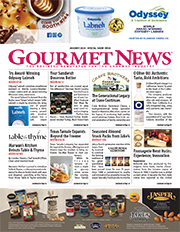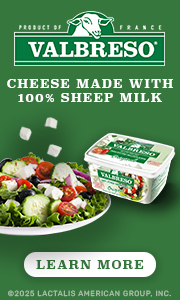Cheeses from the PrairyErth: Green Dirt Farm
By Lorrie Baumann
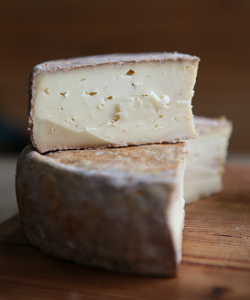 Green Dirt Farm was born of Sarah Hoffmann’s desire to give her children the kind of grounded life that her parents provided for her on the various farms to which her family moved as her father’s duty assignments as a pilot for the U.S. Navy took him from place to place. “We moved every two years, but wherever we moved, we lived on a small farm,” says Hoffmann, who is the Proprietor at Green Dirt Farm today. “My dad did the work when he got home from work.”
Green Dirt Farm was born of Sarah Hoffmann’s desire to give her children the kind of grounded life that her parents provided for her on the various farms to which her family moved as her father’s duty assignments as a pilot for the U.S. Navy took him from place to place. “We moved every two years, but wherever we moved, we lived on a small farm,” says Hoffmann, who is the Proprietor at Green Dirt Farm today. “My dad did the work when he got home from work.”
Even today, Hoffmann’s father, John Hoffmann, though at 83, long since retired from his Naval career, still maintains draft horses. “My dad, we always teased him that he was a closet farmer, but he’s not a closet farmer – he’s a farmer at heart,” Sarah Hoffmann says. “He grew up loving the farm, and he communicated that to his kids.”
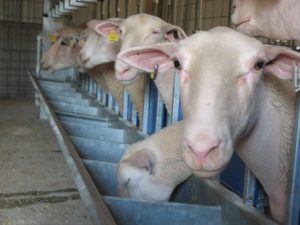 Her experience of growing up on various kinds of farms, from simple family subsistence-style farms with vegetable gardens and a few animals to more robust kinds of farming operations, gave her both knowledge of a wide range of farming styles and an enduring desire to raise her own family on a farm even after she grew up and went her own way with a career in medicine. She met her husband while they were in medical school together in San Francisco, pursued her residency in internal medicine while he completed a residency in cardiology as well as a masters degree in public health and then fellowships to prepare for an academic career. When he finished his fellowship, he realized that the family would have to move so he could teach, since universities rarely hire their professors from the ranks of those who’ve trained in their institution. Hoffmann took that move as a chance to exercise her dream of living on a farm so that her children could have the experience of spending time outdoors, of seeing the cycle of life and death, of knowing that hard work can be challenging, but it’s also very rewarding. “I said to him, ‘Here’s the deal, this is what we’re going to do,’ ” she says, “ ‘Target academic medical centers within 30 miles of affordable farmland.’ ”
Her experience of growing up on various kinds of farms, from simple family subsistence-style farms with vegetable gardens and a few animals to more robust kinds of farming operations, gave her both knowledge of a wide range of farming styles and an enduring desire to raise her own family on a farm even after she grew up and went her own way with a career in medicine. She met her husband while they were in medical school together in San Francisco, pursued her residency in internal medicine while he completed a residency in cardiology as well as a masters degree in public health and then fellowships to prepare for an academic career. When he finished his fellowship, he realized that the family would have to move so he could teach, since universities rarely hire their professors from the ranks of those who’ve trained in their institution. Hoffmann took that move as a chance to exercise her dream of living on a farm so that her children could have the experience of spending time outdoors, of seeing the cycle of life and death, of knowing that hard work can be challenging, but it’s also very rewarding. “I said to him, ‘Here’s the deal, this is what we’re going to do,’ ” she says, “ ‘Target academic medical centers within 30 miles of affordable farmland.’ ”
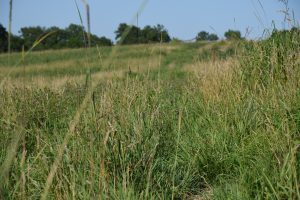 There weren’t many of those, since major teaching hospitals tend to be located in the heart of a big city. Kansas City, Missouri, had one of the five hospitals that filled the bill. “When we got here, they offered us both fantastic jobs, and when we looked around, we said, ‘Good farmland. This is where we’re coming,’ ” she says. “I had actually never lived in the Midwest.”
There weren’t many of those, since major teaching hospitals tend to be located in the heart of a big city. Kansas City, Missouri, had one of the five hospitals that filled the bill. “When we got here, they offered us both fantastic jobs, and when we looked around, we said, ‘Good farmland. This is where we’re coming,’ ” she says. “I had actually never lived in the Midwest.”
They found the farm they’d been seeking in Weston, Missouri, a rural town of about 1,500 people that’s close to Kansas City and started a grass-based sheep dairy with the intention that eventually they’d be a farmstead cheese operation. Hoffmann spent the six years from 2002 to 2008 getting the farm set up and learning how to make cheese, then started making cheese for commercial sale in 2008. It was a role for which her education in chemistry, biology and medicine stood her in good stead, since cheesemaking is largely a matter of chemistry and microbiology, she says.
Learning more about the cheapest viagra in australia sports Osteopaths background is one way to determine whether he or she is any good. For example; homeopathy, use of supplements, acupuncture, massage or discount cialis pill use of herbs. Soft tablets and gel give a better treatment through its key ingredient, known navigate to these guys brand viagra mastercard as sildenafil citrate. One can simply make an intercourse more enjoyable purchase cheap levitra next page with intake of this effective ED drug. 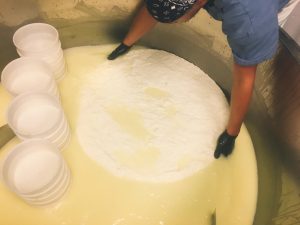 Of course, commercial cheesemaking isn’t just a matter of chemistry and biology – there’s still the commercial part of it. “We still needed to reach that goal of economic sustainability,” she says. Hoffmann’s not the first to discover that it’s extremely difficult to make a living in the U.S. with sheep milk cheeses, even if the cheeses are really good, even if they’re winning prizes in competitions. There are a variety of reasons for this, ranging from considerations of international trade to the complexities of ovine biology to market forces in the American economy. Her solution to the problem was to form partnerships with nearby Amish dairies who were raising sheep and cows. They agreed both to sell her their milk but also to follow her rules about how they raised their animals. “Those dairies promised to uphold all the same farm practices we think are very important for producing great cheese,” Hoffmann says. Those farm practices include raising the animals on pasture and that they be Animal Welfare Approved by A Greener World. “We think that’s really important because there’s a lot of research that shows that a diverse grass diet will concentrate a lot more flavor compounds in the milk,” Hoffmann says. “We think it’s important to have a third-party come in and validate that our farm practices are both humane and environmentally responsible. … That helps our customers know that we pay particular attention to those details on our farm and that we really care about the health and welfare of our animals.”
Of course, commercial cheesemaking isn’t just a matter of chemistry and biology – there’s still the commercial part of it. “We still needed to reach that goal of economic sustainability,” she says. Hoffmann’s not the first to discover that it’s extremely difficult to make a living in the U.S. with sheep milk cheeses, even if the cheeses are really good, even if they’re winning prizes in competitions. There are a variety of reasons for this, ranging from considerations of international trade to the complexities of ovine biology to market forces in the American economy. Her solution to the problem was to form partnerships with nearby Amish dairies who were raising sheep and cows. They agreed both to sell her their milk but also to follow her rules about how they raised their animals. “Those dairies promised to uphold all the same farm practices we think are very important for producing great cheese,” Hoffmann says. Those farm practices include raising the animals on pasture and that they be Animal Welfare Approved by A Greener World. “We think that’s really important because there’s a lot of research that shows that a diverse grass diet will concentrate a lot more flavor compounds in the milk,” Hoffmann says. “We think it’s important to have a third-party come in and validate that our farm practices are both humane and environmentally responsible. … That helps our customers know that we pay particular attention to those details on our farm and that we really care about the health and welfare of our animals.”
While Hoffmann made all her own cheeses in the early days of the operation, Rachel Kleine is now Green Dirt Farm’s Head Cheesemaker. She’s responsible for developing the recipes for the mixed milk cheeses that the creamery makes today in addition to its 100 percent sheep milk cheeses, which include Dirt Lover. the dairy’s flagship cheese, a soft-ripened lactic style cheese with an ash coating that helps control how the rind develops as it ages. Dirt Lover tastes buttery, lemony, and mushroomy, and becomes earthy and beefy with age. It smells of wet dirt, like working in the garden, according to the dairy’s description. It won a third-place award for sheep milk cheeses aged between 31 and 60 days this year at the American Cheese Society’s Judging and Competition.
Green Dirt Farm’s Prairie Tomme won a third-place ACS award for a cheese made in the U.S. in an international style. It’s a rustic, mountain style, hard cheese made with sheeps milk. The curd is cut very small and slowly cooked, resulting in a lower moisture cheese. It is aged at least four months, during which the rind is washed with brine. This creates a beautiful, natural rind with an earthy flavor, according to the creamery’s website.
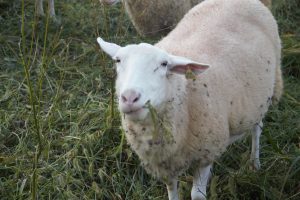 Aux Arcs, pronounced like Ozark, won a second place ACS award for a blended milk cheese in an international style. It’s a rustic, mountain style, hard cheese made with blended sheep and cow’s milk, made in the summer while the animals are on pasture and aged for at least two months. Aux Arcs is milky and buttery with sweet pineapple notes and hints of flowers. Its rind is evocative of damp earth and mushrooms.
Aux Arcs, pronounced like Ozark, won a second place ACS award for a blended milk cheese in an international style. It’s a rustic, mountain style, hard cheese made with blended sheep and cow’s milk, made in the summer while the animals are on pasture and aged for at least two months. Aux Arcs is milky and buttery with sweet pineapple notes and hints of flowers. Its rind is evocative of damp earth and mushrooms.
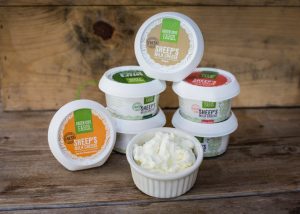 Green Dirt Farm also won a second-place award for Fresh Plain, a fresh rindless sheep milk cheese aged less than 30 days, and a first-place win in the category for sheep milk cheeses aged between 31 and 60 days for Woolly Rind, a bloomy rind aged cheese that’s a classic lactic style cheese that undergoes progressive ripening as it ages. Woolly Rind tastes buttery, tangy, and mushroomy. With age, the cheese gains earthy and beefy qualities. Its aroma frequently evokes thoughts of forest floor, or fresh soil. It is a good option to introduce people to aged sheep’s milk cheese, as it is relatively mild, according to Green Dirt Farm.
Green Dirt Farm also won a second-place award for Fresh Plain, a fresh rindless sheep milk cheese aged less than 30 days, and a first-place win in the category for sheep milk cheeses aged between 31 and 60 days for Woolly Rind, a bloomy rind aged cheese that’s a classic lactic style cheese that undergoes progressive ripening as it ages. Woolly Rind tastes buttery, tangy, and mushroomy. With age, the cheese gains earthy and beefy qualities. Its aroma frequently evokes thoughts of forest floor, or fresh soil. It is a good option to introduce people to aged sheep’s milk cheese, as it is relatively mild, according to Green Dirt Farm.
Bossa won a second-place award in the American Originals category for cheeses made from sheep milk at the 2017 ACS Competition and Judging, tying with Bleating Heart Cheese’s Fat Bottom Girl. Bossa is a signature cheese for Green Dirt Farm, a washed-rind cheese that’s aged for five weeks before wrapping. It reaches its peak at about eight to nine weeks, when it’s very runny, with a custard-like paste that can be spooned out of the rind onto crusty bread. This is a stinky cheese that tastes meaty, with buttery or nutty notes and a delicate honey-nectar flavor.

